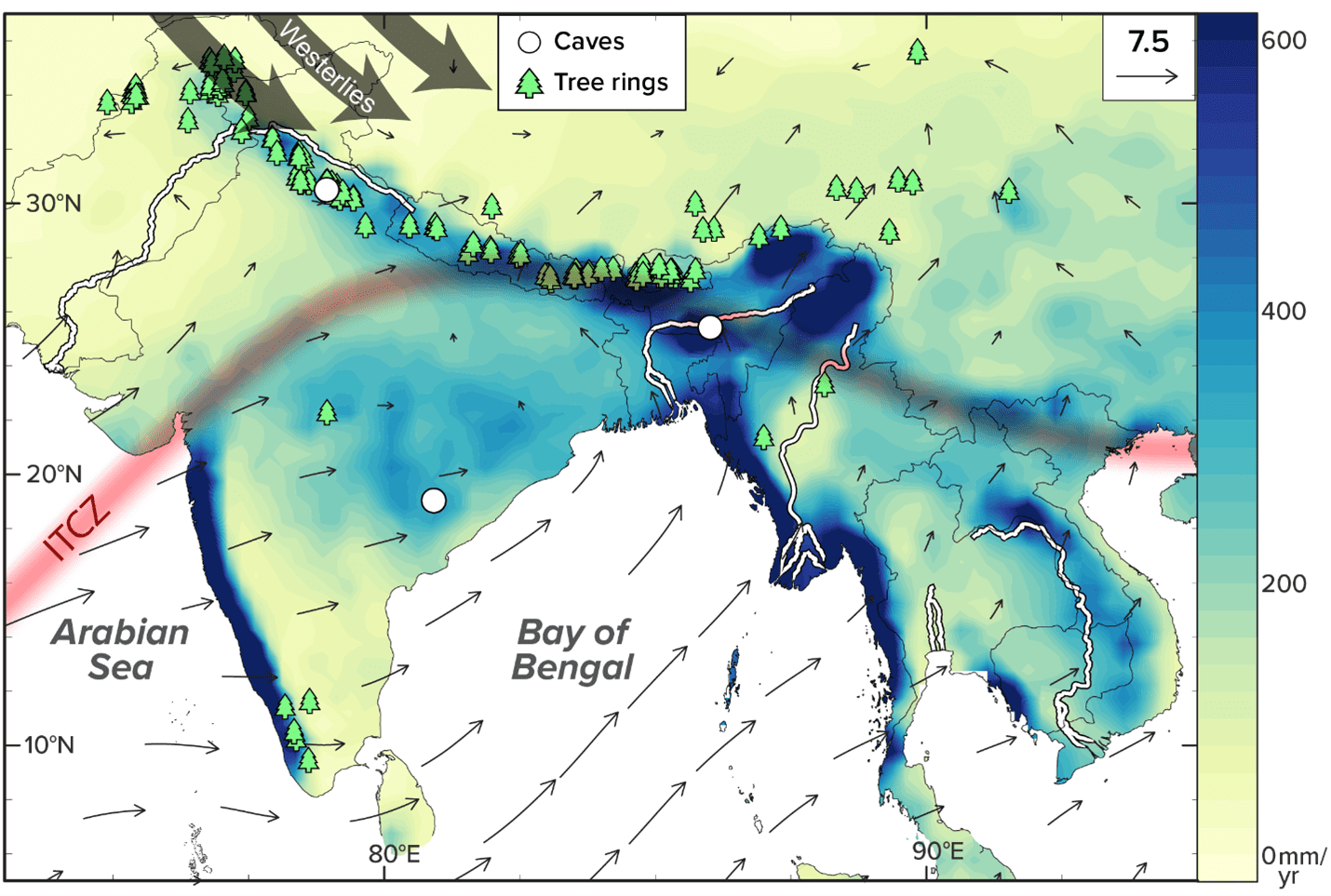Chapter 3: Past, present, and future of the South Asian monsoon
Ummenhofer, C.C., Geen, R., Denniston, R.F., and Rao, M.P. (2024). Chapter 3: Past, present, and future of the South Asian monsoon. In: The Indian Ocean and its role in the global climate system, Eds. Ummenhofer, C.C. and Hood, R.R., Elsevier, doi:10.1016/B978-0-12-822698-8.00013-5.

Key climatic features of the South Asian monsoon region, including summertime (June-August) rainfall (colored in mm/yr) and winds (vectors in m/s), northernmost location of the Intertropical Convergence Zone (ITCZ), and position of the Westerlies; locations of paleoclimate proxy records (speleothems and tree rings) mentioned in Ummenhofer et al. (2024) are indicated as well. Image from Ummenhofer et al (2024).
As a key component of the global climate system, the South Asian monsoon represents the largest of the Earth’s monsoon systems and a lifeline for the region’s nearly 2 billion people, who receive most of their annual precipitation during boreal summer. Traditionally characterized as continent‐scale “sea breezes,” where the land heats faster than the ocean during summer, causing rising air over the continent and moist oceanic air to be drawn in, recent theoretical advances view the monsoon as a regional manifestation of the seasonal variation of the global tropical atmospheric overturning and migration of the associated convergence zones. The South Asian monsoon varies intraseasonally with active and break spells, in response to interannual climate modes (e.g., El Niño-Southern Oscillation), as well as on multidecadal and longer timescales. Hydroclimatically-sensitive proxy records (e.g., speleothems, tree-rings) provide a centennial to millennial context for South Asian monsoon variability and its extensive societal impacts. While an anthropogenically-driven weakening of the South Asian summer monsoon in the 20th century is seen, climate model projections suggest a strengthening during the 21st century. Despite progress in operational forecasts, successful predictions of the South Asian monsoon across a range of spatial and temporal scales still represent considerable challenges.
